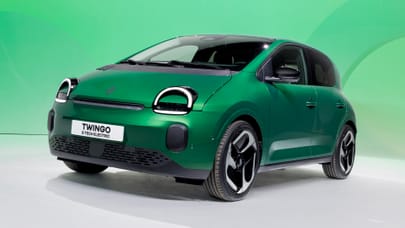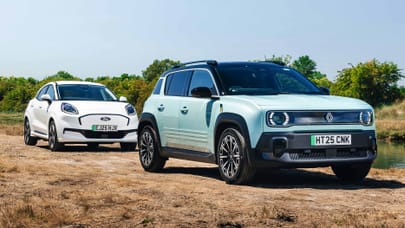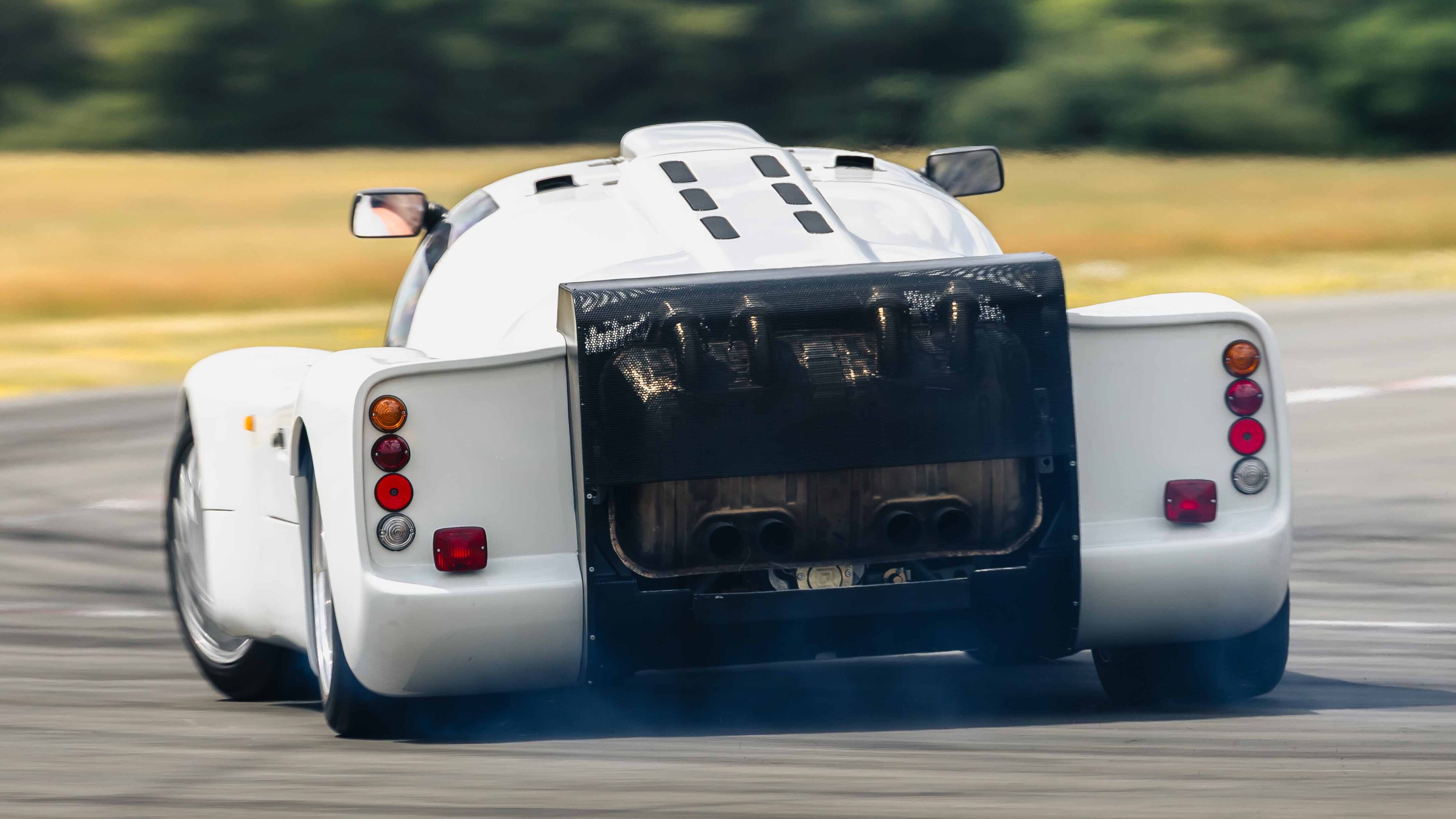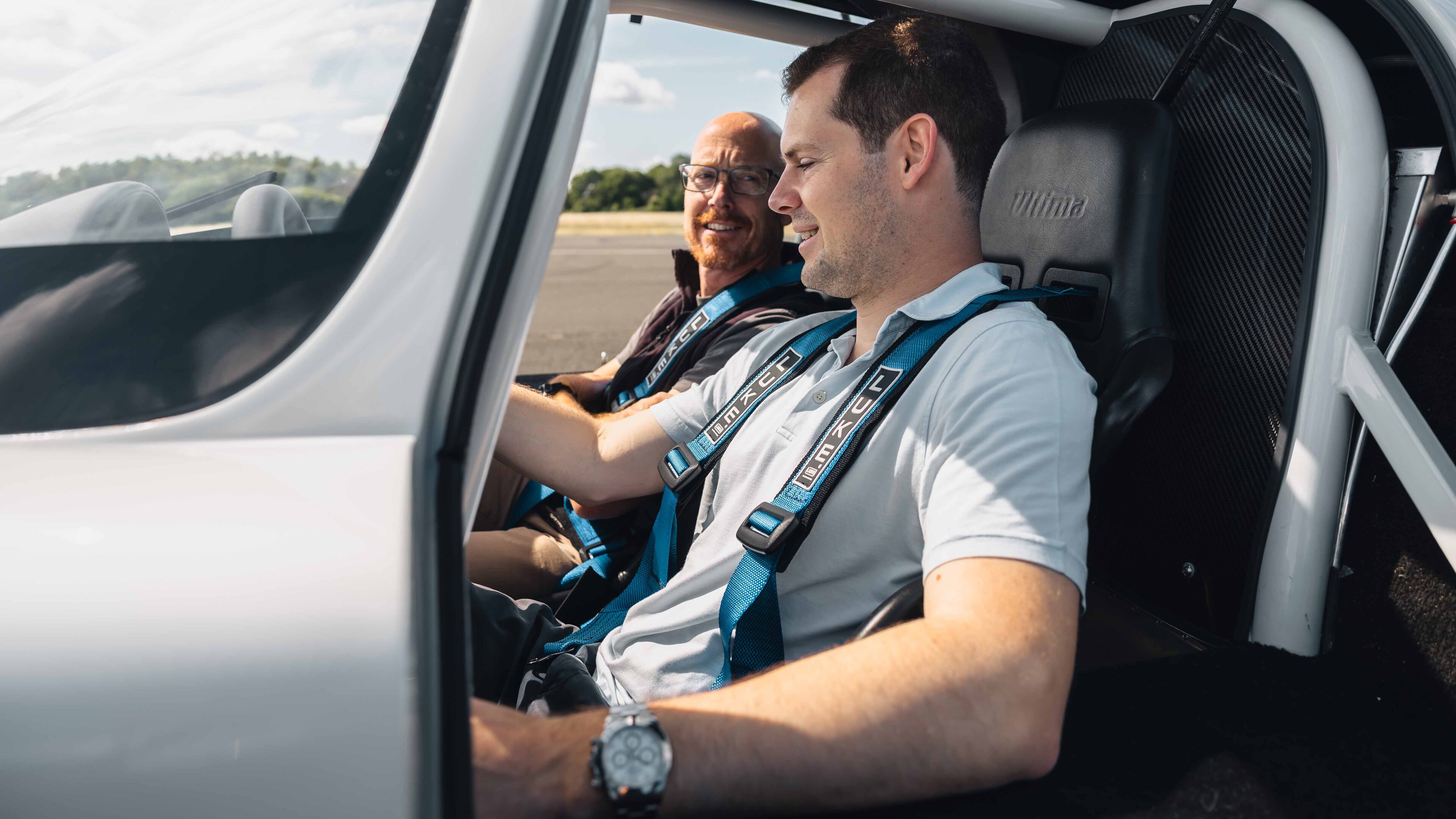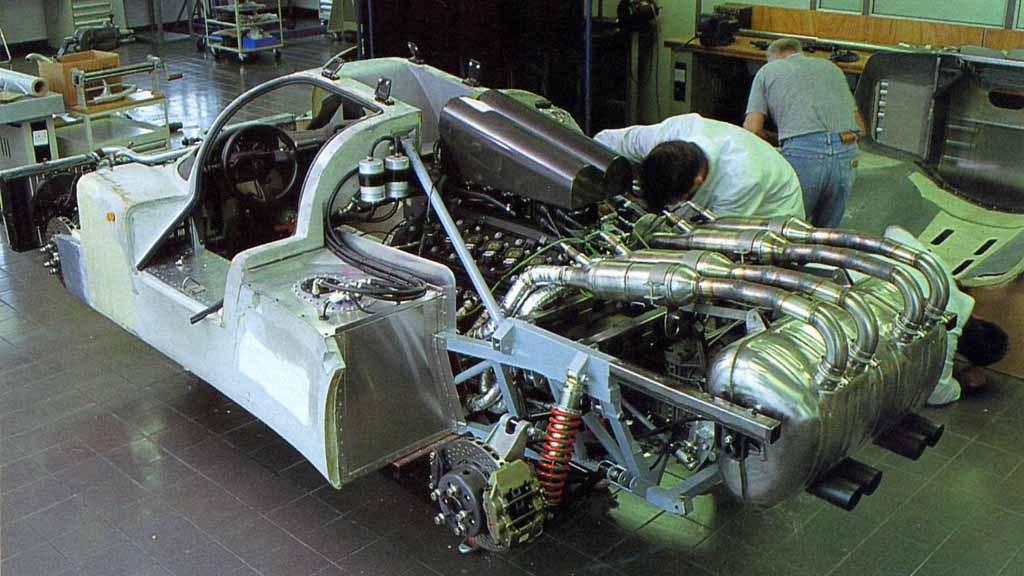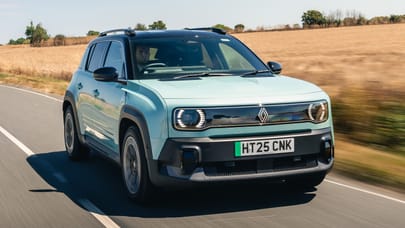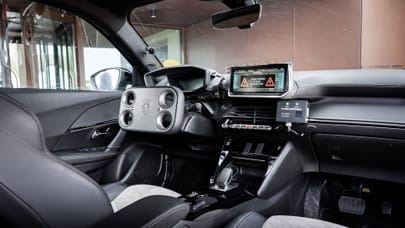
Meet Edward: a recreation of the secret McLaren F1 test car made from an Ultima
In 1990, McLaren was developing the F1 road car. Two Ultima kit cars were used, then destroyed. Now, it's back
There’s a butt coming. Soon it will be going, and I can’t decide if that’s better or worse. The front is an ode to 1970s fibreglass, the back is... well, significantly prolapsed. The square, rheumy headlights lift as it accelerates, then fall like a sigh under braking, the bodywork leans into the corner like it’s about to flop off the chassis beneath, and it exits in a complicated flurry of wheelspin, lock and lurch, displaying a back end of prodigious ugliness. Makes a divine noise, though.
Meet Edward. He’s not the best looking chap, bless him. But he does have a story to tell. Because buried behind the mesh rump is a 6.1-litre naturally aspirated, BMW created V12. That’s right, this tale digs deep into the history of the legendary McLaren F1.
Are you sitting comfortably? Good. Here’s how it goes. The year is 1990 and the F1’s carbon chassis is still two years away from being finalised. But the car's engineers and designers really need a platform to test the driving position, brakes, clutch, gearbox and cooling. It needed to be light, mid-engined and able to take a big engine. A Ferrari Testarossa is briefly considered, but dismissed as too extravagant by the head of F1 road car programme, Gordon Murray.
Photography: Jonny Fleetwood
Instead McLaren ends up buying an Ultima kit car, which is then fitted with a 7.5-litre Chevy LS6 V8. It's a botch job with a cut down swamp and butchered chassis, but it meant McLaren had a running prototype to test its components, including the transaxle gearbox, carbon brakes (quickly abandoned), central driving position (the seat, pedals and wheel shifted to allow it to be right hand drive on the road, centre seat on test track) and a cockpit window that got sucked out at 160mph. The first ever F1 mule is born. It's named Albert after the road outside the workshop the car is being built in.
Edward came two years later when, on 4 March 1992 BMW delivered the very first iconic 627bhp V12 to Woking, where it was then put into a second Ultima chassis. The modifications this time were more complete and included the construction of an entire new rear frame to cradle the engine.
At this point you might be thinking “wow, that looks tidy and fresh for a battered prototype from 33 years ago". And that’s because this Edward wasn’t built 33 years ago. More like 33 days. Albert and Edward were more pit ponies than show ponies, they worked every day of their lives and when their job was done and the finalised McLaren F1 went into production, they were taken out the back and shot. Well, the automotive equivalent. McLaren stripped them of parts, took them down to Bill Bridge’s breakers yard at the end of the M23, and crushed them.
This phoenix from the ashes is pure show pony, as exact a recreation as it’s possible to put together when all you’ve got to work with are black and white photographs. No blueprints for Albert and Edward, they were just jostled and bundled into life. This one, much to its constructor’s chagrin, is exactly the same.
“We could have made it nice,” mutters Paul Lanzante as we pore over it at Dunsfold. “Could have got rid of that revolting back end. But no, he insisted, it had to be the same as the original.”
Top Gear
Newsletter
Thank you for subscribing to our newsletter. Look out for your regular round-up of news, reviews and offers in your inbox.
Get all the latest news, reviews and exclusives, direct to your inbox.
‘He’ is the man who commissioned Edward’s resurrection, an American collector who prefers not to be named, but has worked through Mouse Motors to bring this to life. Why? He has every other size and shape of F1 going, so this was just the logical next step to complete the F1 set. And Paul Lanzante did the work – just the man for the job given his long association with the F1, which includes the Lanzante Motorsport run Ueno Clinic car winning Le Mans back in 1995.
So how did this project come about? “Well, I had a brand new engine. I’d pestered the hell out of BMW – I knew they had a couple of engines left, so I just kept on and on and on at them, and in the end they cracked and sold me one. I thought it would be a good investment and it was because [the owner] found out I had it and made me an offer I couldn’t refuse.
“I thought he was the right buyer for the engine as he owns so many F1s... so we shipped it over to America and it was in his showroom,” Lanzante continues. “Then he calls me up and says ‘I want to use that engine to put in an Ultima’, and I said ‘you’re crazy, the engine’s worth 10 times what the car is worth’. But he insisted. He ordered the rolling chassis from Ultima and we did all the alterations to accommodate the engine.”
It didn’t all go according to plan. The Ultima chassis was delivered using the pick up points from a regular BMW V12 rather than the S70/2 – that was the most difficult to sort – figuring out the cooling was tricky, it needed an entire new bell housing and, “y’know, you come to do that last little bit, and it doesn’t fit and you have to undo so many things. It’s a jigsaw puzzle".
That massive exhaust back box? It’s actually from Gordon Murray’s own XP road car. There’s a weld line across the back where Gordon had opened it up and removed the baffles to make it noisier. But it’s still a hefty 80kg component slung out behind Edward’s rear axle – and that does have an effect on handling.
Because of this unique car’s value, I’m not able to drive it, but Paul has drafted in racing driver Harrison Newey (yes, Adrian’s son), to take me round Dunsfold. The cockpit is tiny, basic, awkward to climb into and ferociously hot. If my foot slips to the left I’m playing footsie with Harrison for control of the throttle.
It’s raw and noisy and dated, but massively fast in a very modern way – 627bhp working on 950kg will have that effect. It rips through the revs, sounds like a buzzsaw and prickles every sense. And yeah, it’s soft and not fully set up, and the weight at the back means a bit of turn in oversteer but that’s the whole point. The original was a battered mule, and so is this recreation. It would be wrong if it was perfect.
Instead it rolls and slides and at one point we have to remove the lower section of the exhaust cover because it catches the wind under the car, starts to pull loose and flap noisily. Proper. It’s exactly those sort of ‘on the fly’ corrections that the engineers would have had to make 33 years ago.
“As an engineering exercise it’s been quite interesting,” Lanzante says. “You think you’re just going to bolt the engine in? No, it’s not that simple. It’s been challenging. All told I think it’s been in the workshop for over two years.”
Going to be sorry to see it go off to its new home? “I stuck that sticker on the front because we’ve nicknamed it ‘the plastic pig’,” chuckles Lanzante. “I can’t wait to see the back of it.” Unsentimental. Which is apt. Because so was McLaren with the original.






